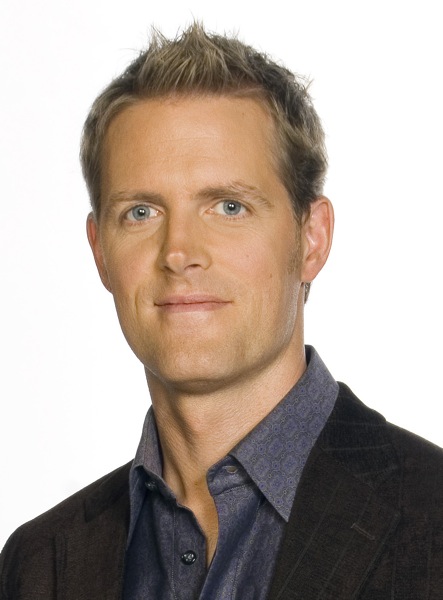Compiled by Emina Gamulin, Perry King, Rebecca Payne, and Khristopher Reardon
In Ward 19, incumbent Joe Pantalone, who has been a sitting councillor since 1980, is running for mayor. There are nine candidates: Rosario Bruto worked in banking for 25 years, and currently owns a consulting firm; Ted Footman (listed as David Footman on the ballot) is an architect and father of four; Mike Layton is an environmental advocate and son of NDP leader Jack Layton; Jim Likourezos is a realty sales rep and longtime resident; Sean McCormick is a sports news anchor and lives on Shaw Street; Karlene Nation is a diversity producer and reporter for CTV; George Sawision is an environmentalist and longtime resident; Jason Stevens is a former director of Travel CUTS; and Karen Sun is the executive director of the Chinese Canadian National Council, Toronto Chapter. Answers have been edited for space, and candidates are listed alphabetically.
“Green spaces are important to residents in this community and we need a councillor who is willing to protect our parks. What is your vision for parks in Ward 19 including Christie Pits, Trinity Bellwoods, and Bickford Park?”
—Monica Gupta, chair, Friends of Christie Pits Park
Rosario Bruto: We have to strike a balance so that everyone can enjoy their space. We need to preserve these green spaces and I think people and businesses and communities all thrive when they have equilibrium of the green spaces and development.
Ted Footman: Each of those parks should have a name associated with them of a park employee and his phone number, so there’s one contact for each park. When I was in Scotland each park had a park-keep who had a little shed where he could make a cup of tea and keep some gardening tools. I think a park-keep could engage the people and have spring and fall plantings. Another big concern of mine is to get policemen on foot to walk through the park. A little bit of foot traffic and they could see the issues, they could see what is left from the night before. The other obvious thing is the filth in the park; I get there sometimes at 6:30 to 7 in the morning, and it would be nice if the park staff could get there early and deal with the mess.
Mike Layton: We need the parks to serve the community better. We’ve got lots of new residents coming in and lots of new families moving in. They like to use their parks a little bit differently, like we’ve seen with Monica and the pizza oven, like we’ve seen with Dufferin Grove and Trinity Bellwoods with the farmers’ market and the greenhouse. It’s not necessarily just skating and baseball anymore, and we’ve got to be responsive to that. We’re not going to end up with a good park system if we start scaling back what the city does.
Jim Likourezos: I want to make sure that they are accessible to everybody and make sure that they are clean and safe to play in for our children. Irene Parkette, there’s a bit of a drug problem there, so that has to be cleaned out. I’ll be adamant as city councillor to be on the police to get that cleaned out.
Sean McCormick: We need to make sure, going forward, that everyone who uses the parks, who applies for permits in these parks, they need to be held accountable for their actions. We can’t allow these parks to be overrun by people who do not respect the parks at the same level as the neighbours. We also need to make sure that we have enough funds in the city to fund city services because maintaining our parks is, to me, one of the most important city services.
Karlene Nation: The unfortunate part of a lot of our planning right now is that we have condos being thrown just about everywhere and green spaces are at a premium. It will be a priority of mine to ensure that our existing green spaces—and any additional green spaces—that can be protected will be [safeguarded]. One of the things we have to do is ensure that the existing parks are well maintained, properly secured, and that they’re cleaned.
George Sawision: I’m going to be creating a new park in Liberty Village called the Greenwoods project, where we’re going to be covering the rail tracks with a green roof and creating a new park further south. Then I want to transform Exhibition Place from a convention centre to a park and let the province move the exhibition area at Ontario Place. So I want a vertical line in our ward protecting our park system, connecting them as much as possible. Christie Pits, I tried to protect them during the garbage strike, to stop them from spraying pesticides. We haven’t protected any of our parks, we’ve moved out all of our maintenance people. I’m going to move those people back so we’ll have a crew specifically set for each park. Each park will have a city-appointed guardian watch over it to ensure maintenance is carried out. Instead of the city giving out those permits we’re going to let the community take care of that.
Jason Stevens: With Trinity Bellwoods, it has become a much more user-intensive park, it’s what’s known as a destination park. Trinity Bellwoods is a very interesting park because it’s the largest unleashed dog space park in the city, but that’s also becoming something people are taking advantage of. We need to make sure it doesn’t get overrun. What’s happening at Christie Pits, there are noise complaints there, so I would handle that by enforcing a bylaw that sets noise limitations.
Karen Sun: I’d like us to come up with a plan for the whole area; for people to know that there is this almost connected network of parks, from Christie Pits down to Fort York.
I certainly agree that the parks that we have need to be better maintained for what they are. I know that the Friends of Trinity-Bellwoods complained that because there is so much use of the park, it needs a little bit more attention than it used to. Having different types of uses in the parks is really important. Alex Duff could probably use some renovation. It’s winter for most of the year in Toronto, unfortunately, so giving the public good access to those indoor spaces, those community meeting rooms, is just as important as it is to give people access to the green areas.
“Currently, BIAs are able to apply to cost share 50/50 with the city on capital improvements that take place in their BIAs. The problem is that the money allocated towards this very beneficial improvement program has not increased proportionately with the increase in number of Toronto BIAs. A small group of BIAs have been approved for very large and costly capital projects, which uses up a significant amount of the money allocated by council for this program. We are interested in knowing if the candidate sees the value of continuing this improvement cost-share program and what ideas they have for ensuring that there is access for all BIAs wanting to participate.”
—Lynn Clay, executive director, Liberty Village Business Improvement Area
Bruto: The answer is yes, absolutely I want to continue that. It’s an incredible program and I’d like to see more money put towards it. As far as allotted funds per year are concerned, there has to be some way of prioritizing projects and looking at each project. A deadline needs to be given and at that point the government needs to review each project and prioritize and be sure there’s equal play with all communities. Not only with number of dollars, but with number of projects. The selection process needs to be publicized ahead of time. When we publicize the returns we get, we will answer each criteria.
Footman: I would look at each capital project on a project-by-project basis. I’ve never been in favour of Victorian lampposts being installed in the twenty-first century, so it depends on where these expenses are. I don’t think fancy lollipop lampposts make College Street any better.
Layton: I’m definitely in favour of keeping the program. I’d eventually like to see the list of things that gets cost-shared expanded. Energy upgrades and installation of renewable energy projects on these buildings, these are things that could really have a huge impact down the line. Finding an equitable way of breaking it down to make sure everyone gets their fair share, I’m interested in the idea. Year-to-year it might fluctuate, but altogether we should make sure that downtown gets its fair share.
Likourezos: That’s a big question that I’d have to sit down with my team and talk about. It’s a serious question and I don’t want to give you an answer when I’m not prepared.
McCormick: This is where I get back to the way we spend our taxpayer dollars. There’s only so much money to go around. If we’re too busy wasting money on uncompetitive contracts, sole sourcing all the contracts in this city, and wasting millions of taxpayer dollars that could have been saved in the competitive bid process, then that’s money that could go to initiatives like what Lynn is talking about.
Nation: We have to look at what exactly is being asked, at their budgets, and at what kind of capital projects they’re requesting funding for. But, my overall support is yes for these BIAs and for the continuation for this type of funding, it’s crucial. One of the things I need to know is what are some of things that they’re spending money on. Most of the BIAs I’m familiar with, they do a lot of marketing, promotion, a lot of strategic work for lobbying on the part of businesses. This is all crucial, so we need to see exactly what they’re asking for.
Sawision: The city has to raise that to a minimum of 80 per cent and only allow the BIAs to contribute 20 per cent because they’ve already contributed through their property taxes. Everyone asks, “Where are you going to find the money?” I’ve gone through 12,000 pages of documentation at the city, looking for the pennies in all the budgets, and we can extract over 500 million dollars over the whole city budget that can be distributed to all the BIAs throughout the city. I’m trying to move it away from the pet projects and I want the community to drive the councillor, and not the other way around. I still say that the community should have a bigger say in the money being spent, and right now they don’t have that.
Stevens: The answer is yes. How I would do it is by being a squeaky wheel on council. I would ask how, and what it comes back to is sitting in council chambers and standing up for your ward—and showing that you have what it takes, [I’ve] always been good at that. I’d be fully behind the business improvement association and this program.
Sun: As a councillor I would certainly support the continuation of that program. As to how much money would go into the pot, it’s hard to say because I don’t know what that budget is. I think it would be good to have some sort of networking opportunity for BIAs to come together and see what sort of projects were being proposed in different parts of the city. It’s good for them to see what other businesses are doing and how those discussions are happening in other areas. Perhaps there’s an opportunity to partner, and perhaps learn from each other, and perhaps there could be cost savings in that way, if more than one BIA went in on a similar project.
“Currently if I wanted a permit to put a wooden stand outside of my store, it’s a four or five day process. Will the candidates attempt to streamline the approval process for accessing permits?”
—Chris Szego, manager of Bakka Phoenix Books (697 Queen St. W.)
Bruto: I believe the city is experiencing an overload as far as administration is concerned. But I’m a strong believer [that] services need to be upgraded. to be boosted and at the same time administration needs to be reduced. These types of permits are almost impossible to manage. In any case, I’m sure that there was some purpose or need when that bylaw was put in place, but I think we need to revisit these bylaws and streamline them. Not only for permits, but everything the city does. We really need to understand that when we’re dealing with services we’re dealing with time, money, and work. We’re also in competition with outside services. We need to be competitive in providing these services.
Footman: There will be no approval process. There will be no licensing for it. I will stop that policy; you are allowed to put out a sign. Council should say, “This is the size of the sign.” Business owners should not have to pay the city to put a sign out front, period. The only time the municipal bylaw office should be allowed to have anything to do with this is if a sign is in the wrong position so people can’t get by it, or the sign is in excess of the regulated size. I believe charging people $500 for that right is theft, it’s a new tax and I’m very upset about the way they are enforcing it.
Layton: Yes—online. Here’s a story: my sister just lives over on Markham Street. She just had a baby. Everyone’s very happy; everyone likes to come and visit. It’s one-hour parking. So grandma, when she drives down, has to move the car every hour. We can actually download a weekly pass for 15 bucks, and then we’re okay to park down there. Well, I think there’s stuff like that that we can do online pretty easily, all the infrastructure is there.
Likourezos: Absolutely. I’m a small business owner myself. I will be active so that we streamline permits and stop cash-grabs. There should be restrictions as to what we put on sidewalks, but a lot of it is cash-grabs more than anything else, so I’ll be very active with that.
McCormick: It’s a big issue down here [on Queen West], with these A-frame signs. That’s a $490 fine right now if a business puts out this A-frame sign without a permit and if the business doesn’t qualify for the permit. If you could believe it, right now there’s a bylaw in place that says that if you have less than 20 feet of frontage, you are not permitted to have an A-frame sign outside of your establishment. Eighty-one per cent of businesses in the West Queen West area do not have 20 feet of frontage. It’s a one-size-fits-all policy that’s been brought in by the City of Toronto, and one-size-fits-all doesn’t fit Queen West. It’s up to the city councillor to look at these things and reopen the bylaw for discussion. We need to do everything we can to create an environment to ensure that these small businesses remain viable. If that means letting them put an A-frame sign on the sidewalk for crying out loud, let’s let them do that.
Nation: This is exactly what I’m talking about in terms of how the city terrorizes and treats small- and medium-sized businesses with complete contempt. It’s abominable that it takes four to five business days to get a permit to put a stand out. Small- and medium-sized businesses provide a lot of employment and revenue to the city. There will be a way of streamlining all of this because this will be a priority on my part. There’s got to be a better way of minimizing the bureaucracy, the stupid bureaucracy at the city level.
Sawision: A simple yes, as much as possible. Not only do we have councillors who have been here for thirty years, but also we have senior city staff that have been here for thirty years or more, and they still use the old methods of approving permits, [instead of] using online processes and streamlining it that way, which causes those delays. So it’s a matter of logistics in the city, easily done. We’ll do more online applications, and approve the process first, then have the inspector go out, and if there’s anything wrong, they can take [the permit] back. It’s a reverse onus.
Stevens: Yes, I’d be willing to. The steps [to do this] are obviously taking your city staff and having them meet with the permit departments within the city. There are 36,000 employees in the city of Toronto, more than a lot of cities.
Sun: It should be a form that you can fill online and send in. To ask business owners, especially small business owners who may not have a lot of staff, to spend the amount of time that they need to, in person at city hall, is unnecessary. There used to be a lot more information on the city’s website for who to call and how to get information. I was looking for information recently and all those phone numbers have been taken off; it all goes through 311 now. That doesn’t really make sense to me, because 311—if you can get through—it’s basically a switchboard service. In theory it makes sense to have an easy number to remember and then they put you through to the right person, but I think they need to put more resources into it.
“Commercial property taxes have increased insurmountably in the last seven years. Councillor Pantalone has stated that he has helped reduce them by three per cent. Some of the ratepayers have incurred increases of almost 100 per cent in the last seven years. There has been no significant increase for businesses in either revenue or city services (i.e. garbage pickup, street washing) on College Street, for example, to substantiate these increases. How would you either put these monies to better use or significantly reduce the taxes in order that businesses remain viable in the ward?”
—Louie Cristello, co-owner, Southside Louie’s (583 College St.), and area resident
Bruto: There should be a freeze on taxes. We need to look at how we are currently providing services and how we could improve them. We need input from all direct managers on how to improve services. I think that it’s vital to ensure that the city provides services like snow cleaning and garbage pickup; because these are services that government needs to be providing. Where outside sources can provide it at a cheaper cost, we really need to examine what we’re doing wrong.
Footman: I’ll start by no more increases in the taxes. Let’s look at untended contracts at city hall and try to find some savings. Perhaps we can reduce and take the tax level back a little bit for these business owners. Because I agree, Louie is not the only one, a lot of business owners are telling me that they might have to close. We could slowly reduce the taxes, and I think the bylaw officers that we’ve hired to enforce the sign bylaw, that’s where the money has been spent.
Layton: I’m not sure that some of those numbers are correct. I understand they have gone up quite a bit but so have increases in residential property tax; the fact is that cost of services have gone up and with provincial downloading we’ve had to play a bigger role. Right now we’re resurfacing Dundas, and that needs to be done. The Green P for instance has just bought a school and is turning half of it into a parking lot around the corner. This is going to provide really important parking. So these are investments that the city is making.
Likourezos: If we were to cut property taxes, ultimately the landlord will make more money, not necessarily [save money for] business owners. But we have to make sure we don’t get these 100 per cent increases. I’m going to work hard to make sure we don’t spend money wastefully. It’s gotten to the point where I think 40 per cent of the city budget comes from property taxes. When people open a business the cost of property tax is accounted for, but not increases of 15 per cent per year. We have to keep this in check.
McCormick: We have seen our budget, in the last seven years, grow from $6.2 billion to $9.2 billion. I challenge anybody to tell me that our level of service in Toronto has gone up by 50 per cent as well. It has not. I want to know where that money has gone. It hasn’t been going into services because the level of service has declined.
Nation: Small- to medium-sized businesses in Toronto and especially Ward 19 pay three times higher property taxes than businesses in 201 municipalities across the province. What I would commit to doing is holding the line on taxes for businesses, so that they don’t see any more increases. We need a moratorium, a year or two or more, on local business property taxes. We need to stop the wasteful spending at city hall so we can see the savings.
Sawision: Even if I freeze taxes, their taxes will go up because of property tax assessments. We are a victim of our own success. We should have been pro-rating the taxes to take that into account. Joe Pantalone is right; he’s dropped the taxes three per cent. However, the assessments have gone up over 100 per cent, so some properties that were worth $500 thousand are now worth $1 million. That will double your taxes. We’re going to have to put a moratorium on taxes, and start putting in a new formula. I’m going to put in a differentiated tax system, so we’re going to have four rates of taxes. One for larger corporations, one for small businesses, and two residential rates: rental and regular residential.
Stevens: The ward, last year, saw a four per cent increase in property taxes. I think what I can do and promise to do is not increase property taxes.
Sun: From what I understand the city does have a plan to reduce business taxes so they will be more in line with the tax rates of the 905. One of the reasons the taxes are going up is because the property values are going up, it’s not an increase in the tax rate necessarily, it’s an increase in the property values. I was talking to a business owner on Harbord Street the other day, he’s sort of a corner grocer, and he said “You know, I sell potatoes, the price of potatoes hasn’t gone up.” I would certainly want to support businesses so they can stay in the neighbourhood.
“I am concerned about the Ossington Avenue restaurant moratorium. Do the other candidates support the moratorium, and if so, why? And if not, what would they have done differently?
—John, local resident (last name withheld)
Bruto: Whenever you have a moratorium it means you are eliminating someone from starting up business and allowing existing business to have that advantage over others because of the lack of competition. In short, the community suffers, because the cost of services and products may be higher than they should be. However, in the case of the Ossington moratorium, [which is] dealing with restaurants and liquor licences, and deals with the enjoyment of one’s property, all these things need to be considered. I know what caused the moratorium but we need to find out what the current situation is. If things are [the same] we should continue the moratorium, but if there’s any change we should revisit it, to ensure that everyone’s rights are protected.
Footman: I don’t support it and I would have had public meetings. I believe that the interim control bylaws initiated by Mr. Pantalone are a draconian measure; there was no need for it. Let businesses open and if they are good operators they can stay. If there’s a nuisance then you can enforce, there’s tons of bylaws to use to deal with them. What they did there was reduce some people’s land value by twenty-five percent. Some people were crying at the public meeting having worked their whole lives with little businesses that wanted to expand to a second floor. Mom and pop want to have a patio in the back but that Ossington problem Mr. Pantalone started on College Street is now a citywide bylaw instigated by Mr. Pantalone. Because of his interim control bylaw, still nobody can open a restaurant, so it has been challenged at the OMB.
Layton: Well the moratorium is over. Supporting it or not, it’s done, what we have to look at now are solutions for how we move to the next stage. What do we do with neighbours that are being kept up at night? For the most part, the proprietors of these establishments are good people. We need to make sure that we enforce the rules. Part of that is we need a better capacity to enforce bylaw officers, and that may mean we need to send more bylaw officers out on to the street. It’s finding that balance and it shouldn’t be restricting businesses coming in. I’ve met with a couple of the restaurant owners and they have some great ideas for making this happen.
Likourezos: I do agree something should have been done because residents’ concerns are paramount. The worst part is that it’s stopped growth in that area. It’s not an Ossington issue; it’s a city issue. It’s time that councillors got together and decided; there are three types of restaurant uses. [There’s] food, which shouldn’t ever have restrictions with [liquor] licences, resto-bar or sports bar, which, you know, it’s a bar, and three, it’s a nightclub. But when I hear someone wants to open a bakery, you know, they can’t because of the moratorium, [then] we’re stopping growth.
McCormick: I’m very strongly in disagreement with the moratorium. I live two blocks from the south end of Ossington. Eight years ago, that was a no-fly zone, it was filled with karaoke bars, drug dealers, and criminals. I walk down that street today, and it’s filled with fashion boutiques, with lounges, and world-class restaurants. I believe that the moratorium was shortsighted, it was a knee-jerk reaction by the politicians that were involved, and I completely disagree with it. That neighbourhood around Ossington, Ossington Village, is ten times the area that it was five years ago
Nation: I feel that the moratorium was rammed through, once again, without a whole lot of consultations. There were a few meetings, but I felt the meetings weren’t as productive because you had meetings where both sides were screaming at each other. You needed a lot more targeted consultations, and to treat the businesses with greater respect. You’ve got to have more of a mix—you need grocery stores, bakeries, other types of businesses in the area. But, the bars and restaurants were the first ones who took a risk on the neighbourhood, to try to beef up the image of this neighbourhood. They’ve now made it, along with the residents, a hip place to be and to hang out.
Sawision: We used to have the same problem with Little Italy, when Little Italy was being built; a lot of people complained about noise and things like that. We dealt with the residents that were within ten houses. Because we have an old city, the residents are very close to the stores and sometimes the restaurants have back patios that are in someone’s backyard. A moratorium—that’s like trying to stop a train. We should deal with each property individually and the area residents that are close by.
Stevens: I would definitely extend the moratorium. It has benefited a lot of residents, they’re complaining about noise. I think we need to get them to keep that moratorium up. The situation has been improving because of the fact that the moratorium is there. It’s not about finding the right answer, it’s finding the person who cares the most, who is going to be there day to day and treats the ward like it’s their family.
Sun: I think there should have been more follow-up, there should have been more consultation with both the business community and the residents, and that didn’t happen. In December of last year [the moratorium] was made permanent. A lot of people didn’t know about it. My concern with the interim control bylaw is that while some people will argue it prevented the problem from getting worse, I don’t think it resolves any of the problems that were there to begin with. The problem is when the bars let out and everyone walks out to the side streets where they’re parked and everyone is standing on the sidewalk talking for half an hour, loudly, that’s what annoys people. I’ve talked to a few bar owners and one of the things we’ve come up with would have to be negotiated with the province. One suggestion was to get rid of last call. Another suggestion was to get rid of the signs of consumption law.








1 response so far ↓
1 John // Oct 18, 2010 at 12:53 pm
Mr. Layton, the Ossington restaurant moratorium is NOT over. The Salt Wine Bar was shut down just a few weeks ago because it could not get a restaurant license due to the moratorium. That’s an entire staff out of work, plus tens of thousands of dollars of investments down the toilet, because your endorser, Joe Pantalone, could not be bothered to figure out a real solution. How can you propose new rules, when you won’t even acknowledge the failures of the old ones?